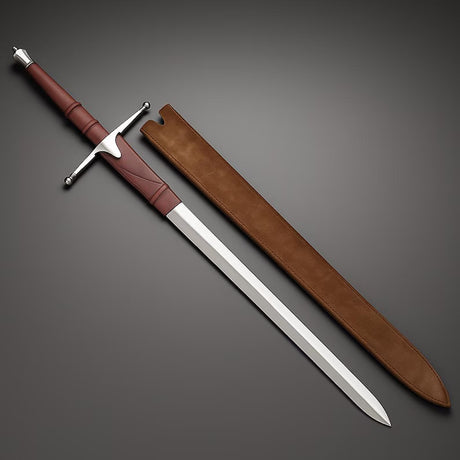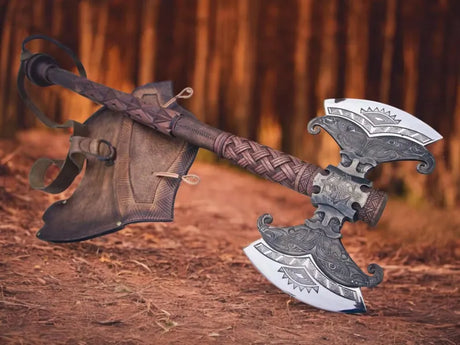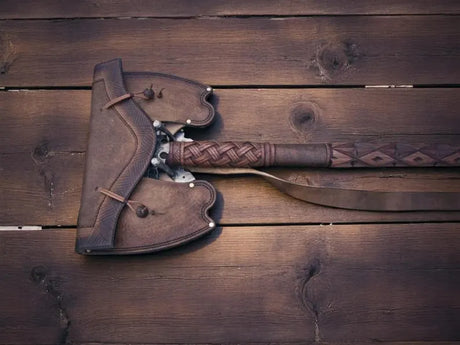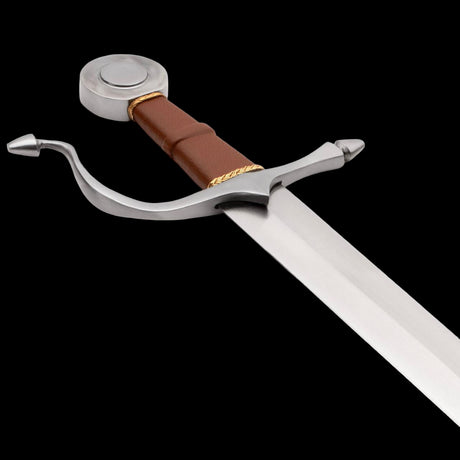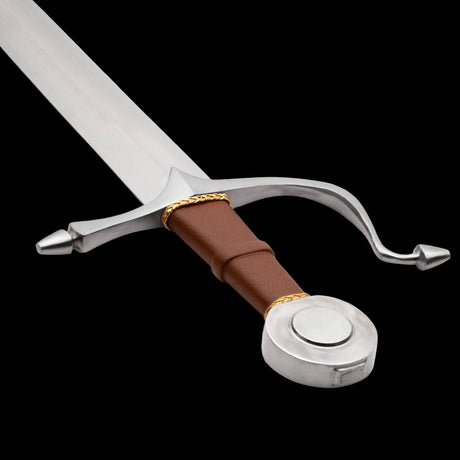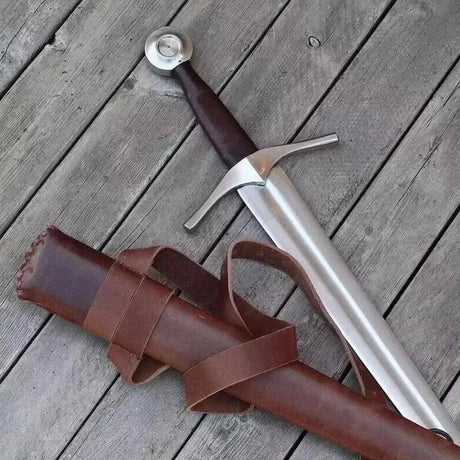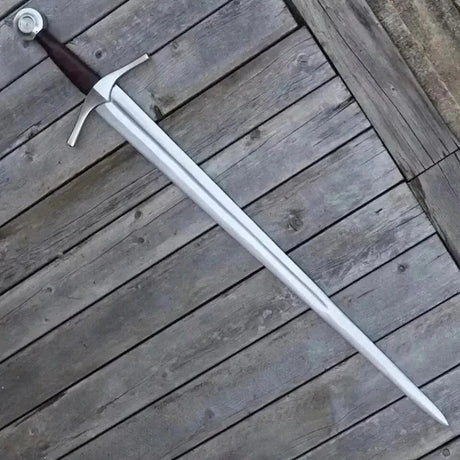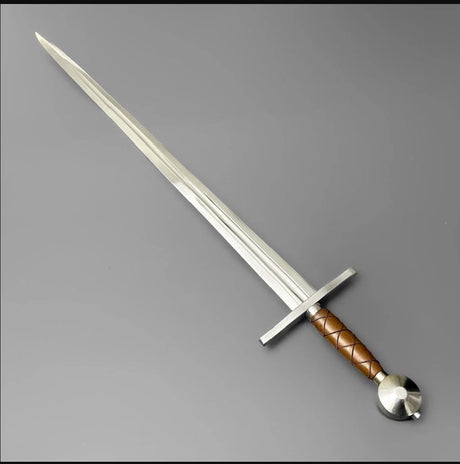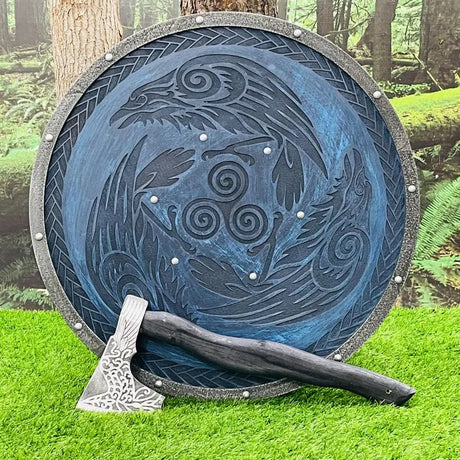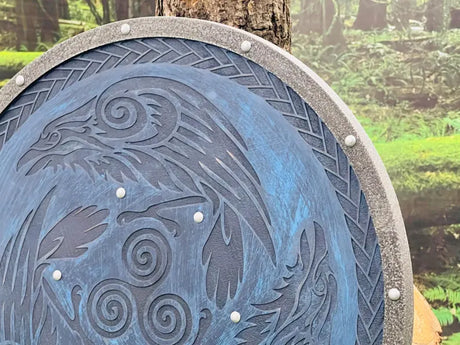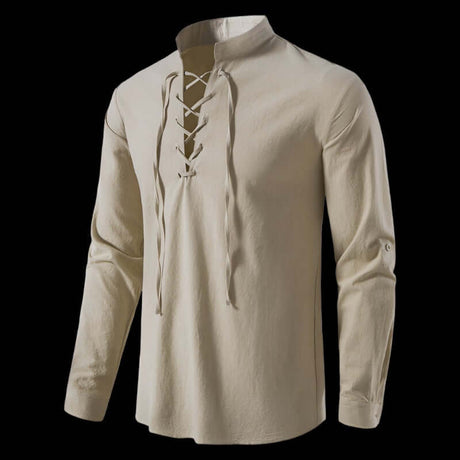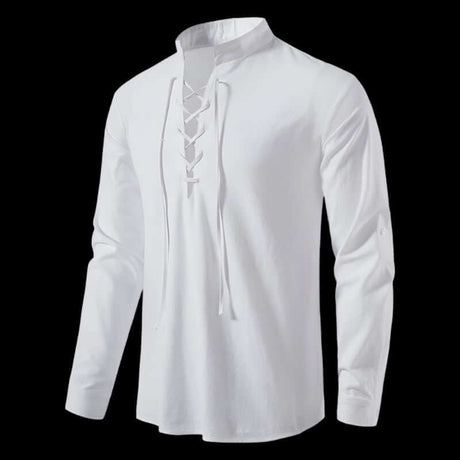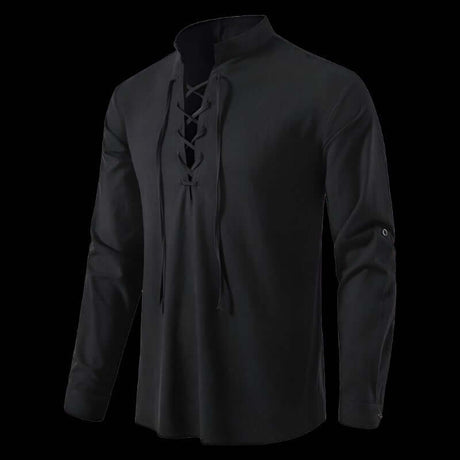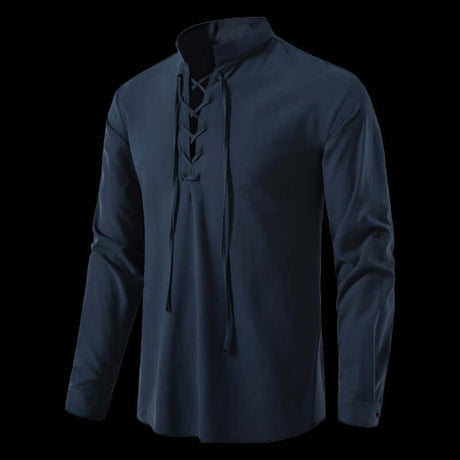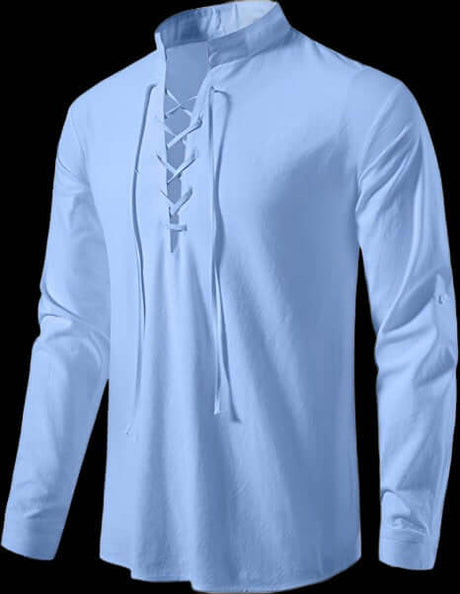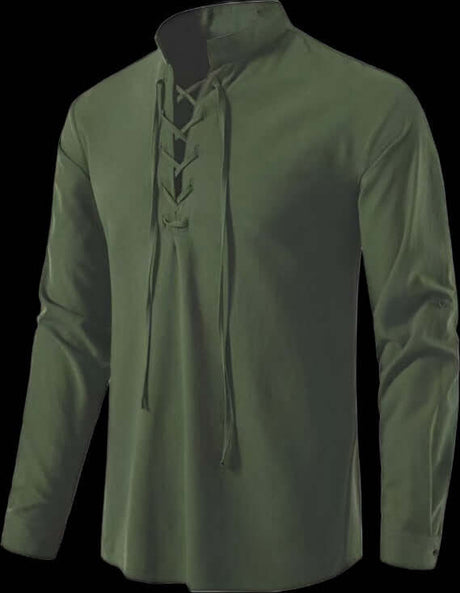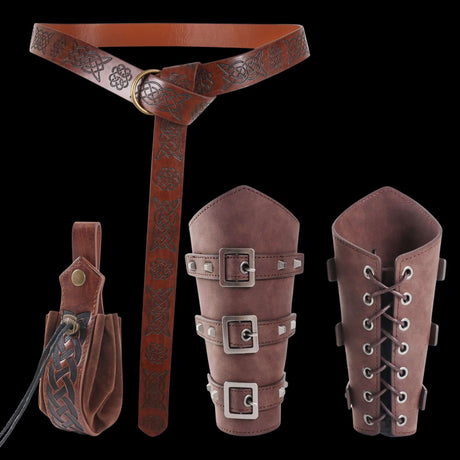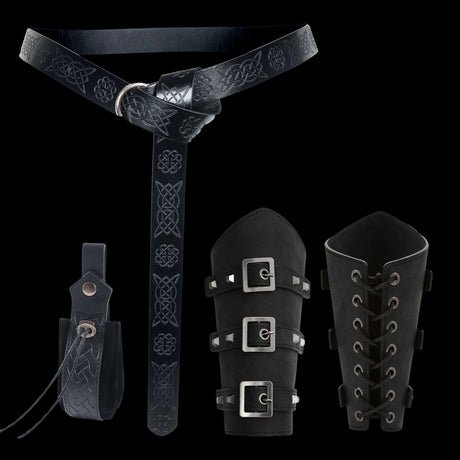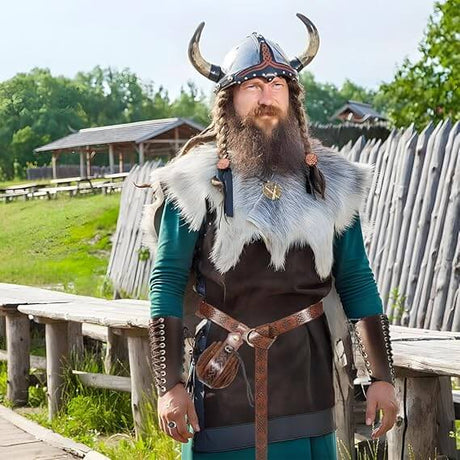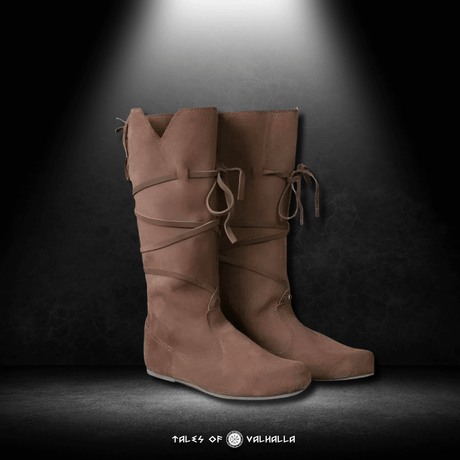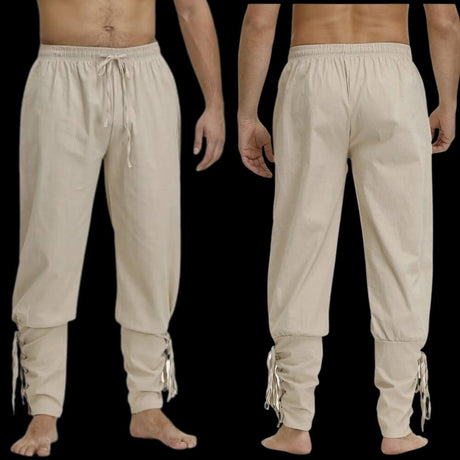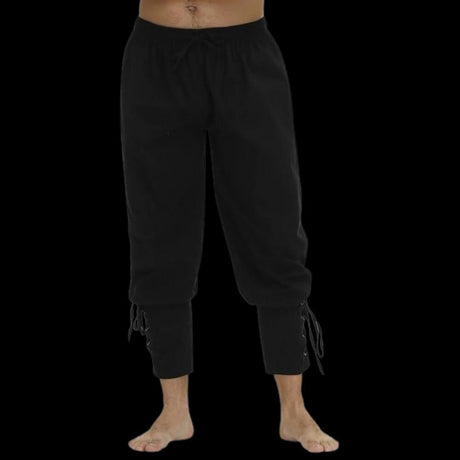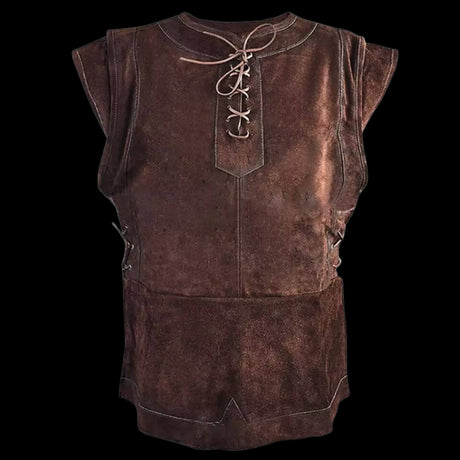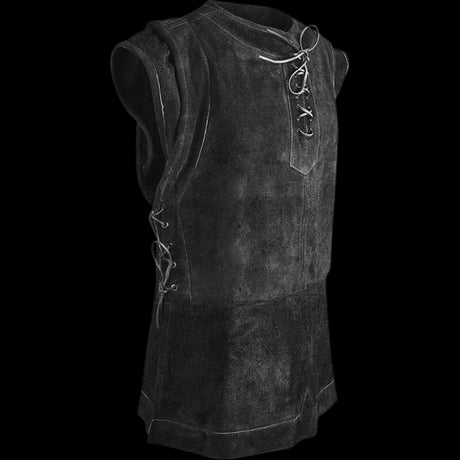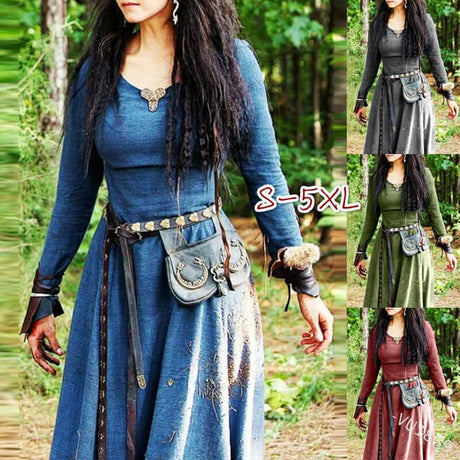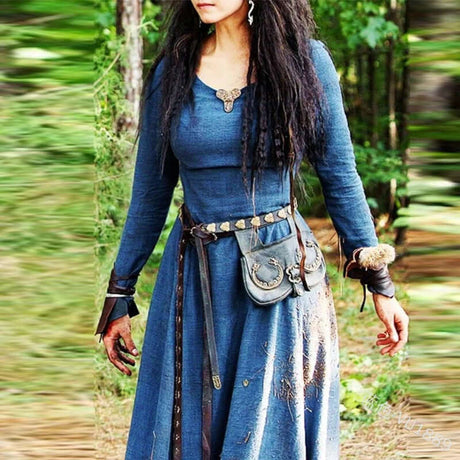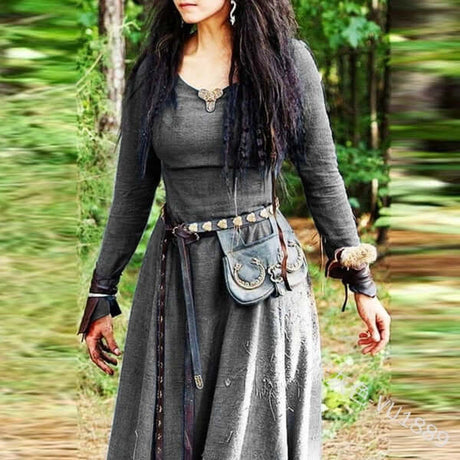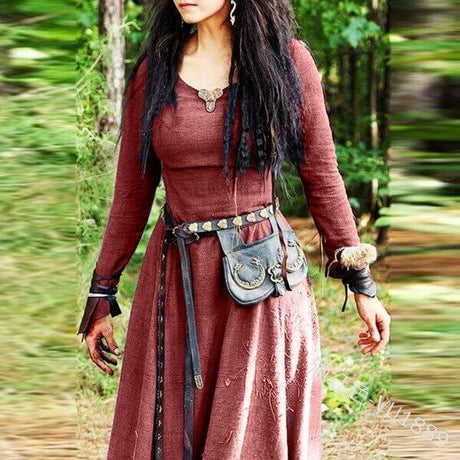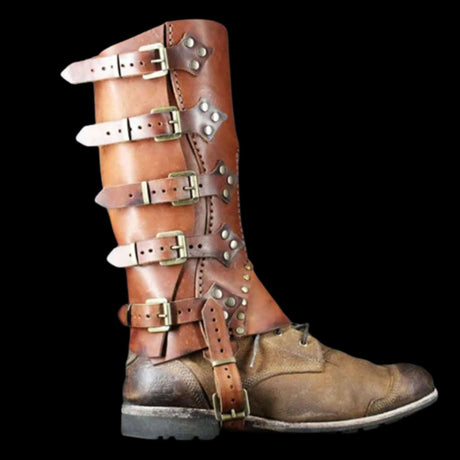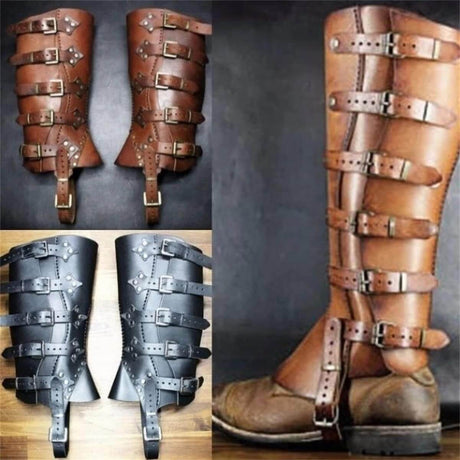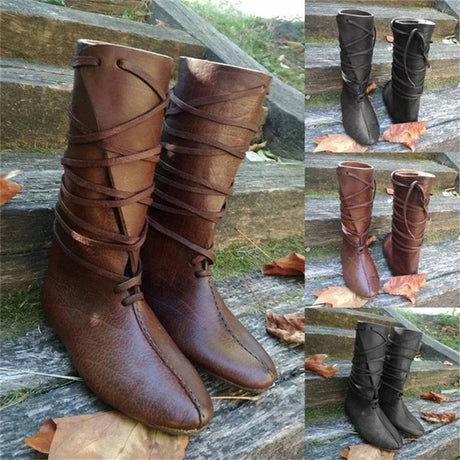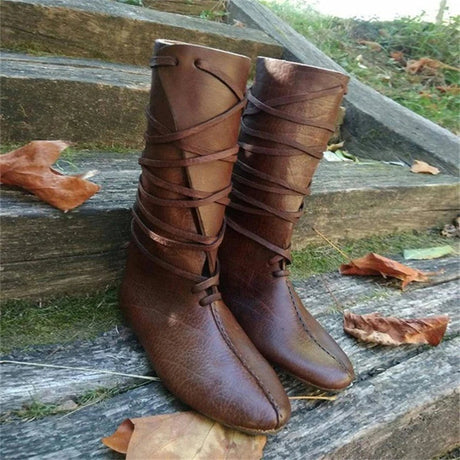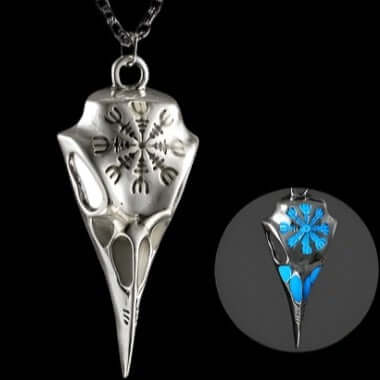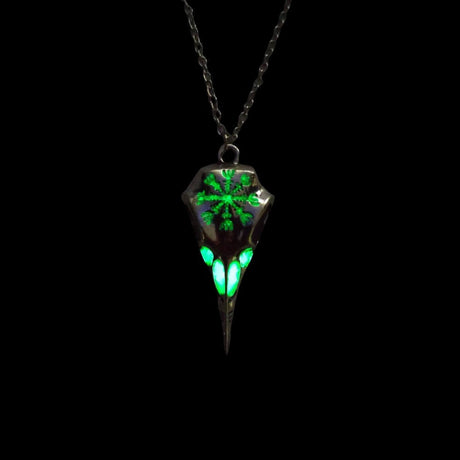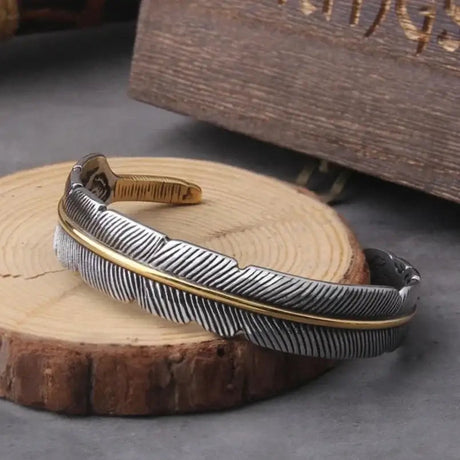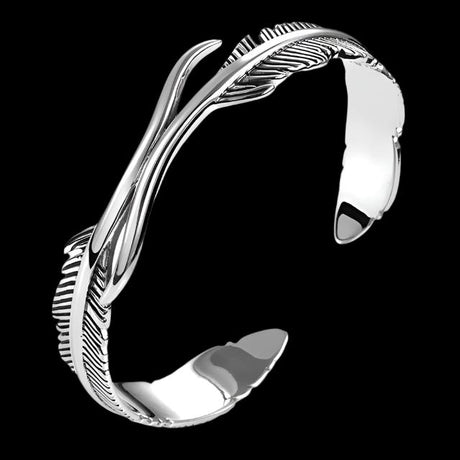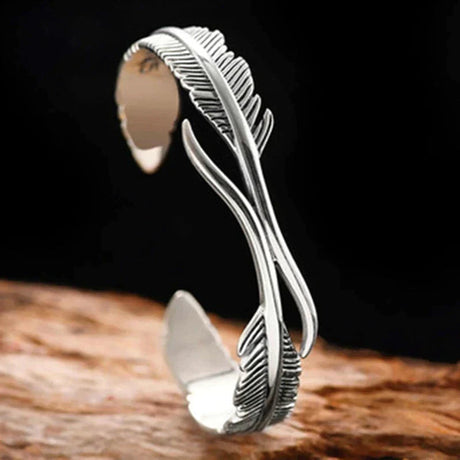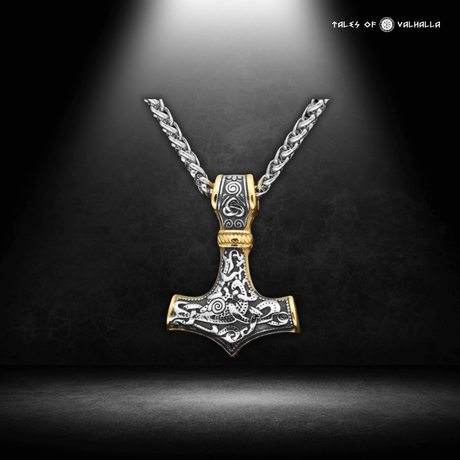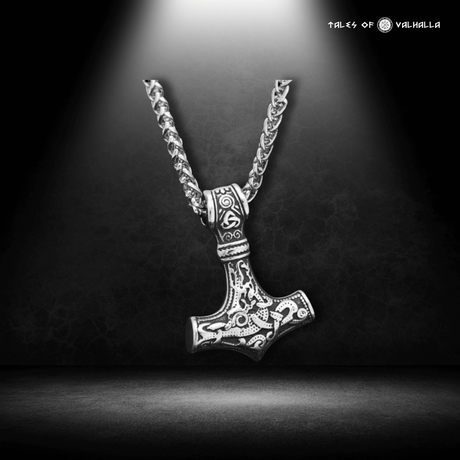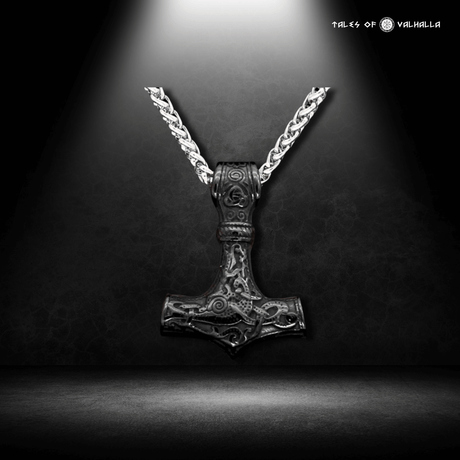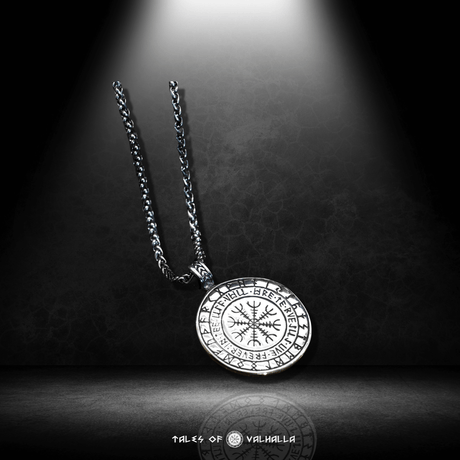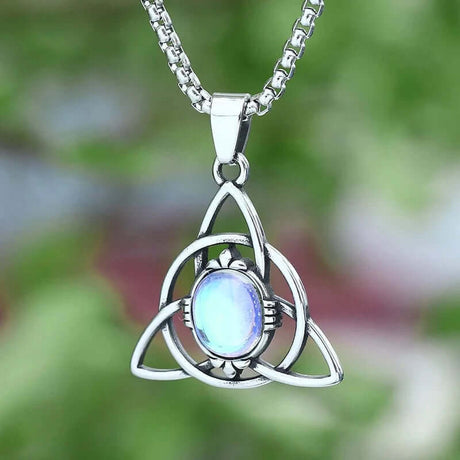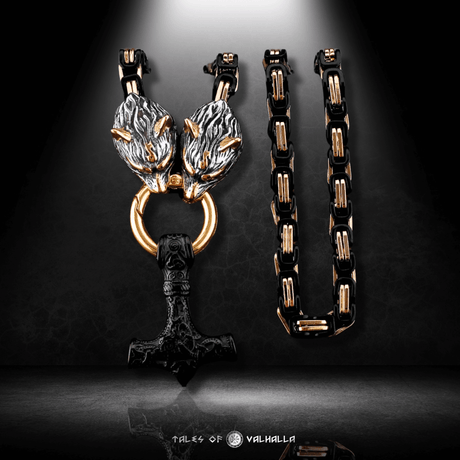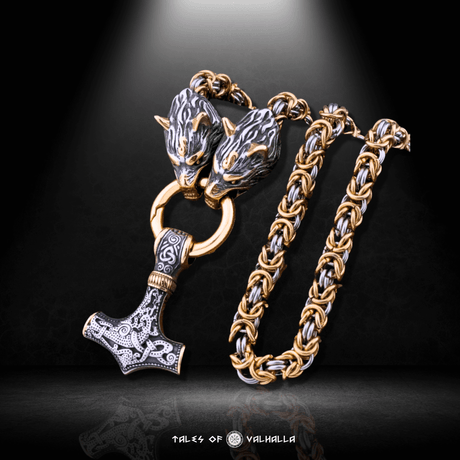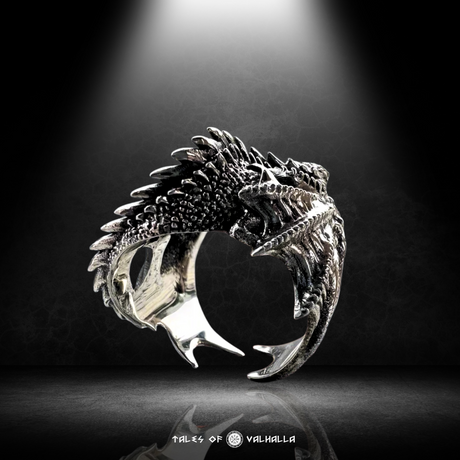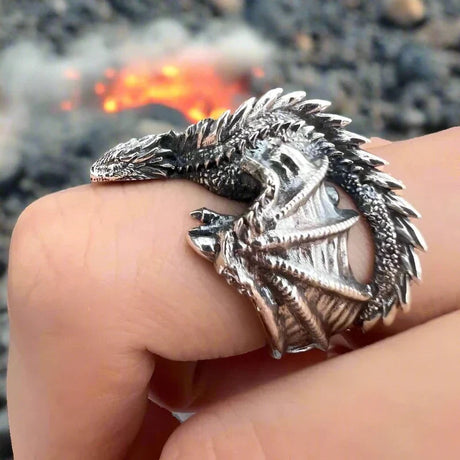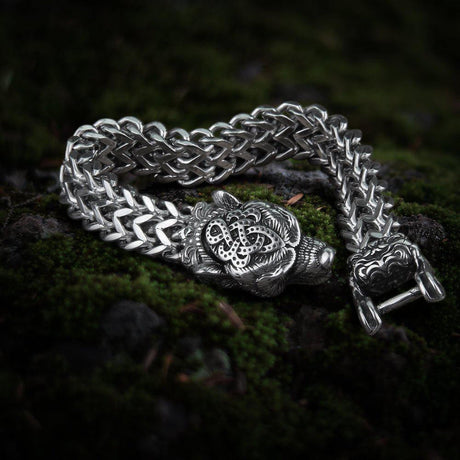When we conjure the image of a Viking warrior, what do we see? For most of us in the United States, the picture is immediate and powerful: a fierce warrior, clad in leather and mail, gripping a massive, fearsome axe. The axe, the sword, the spear—these are the icons of Norse combat. But what was the Vikings' greatest weapon? Was it the shield-splintering power of a Dane axe? The high-status lethality of a pattern-welded sword? Or the simple, effective reach of a spear?
The answer is both simpler and far more profound than any single hand-held weapon. The truth is, the single deadliest, most effective, and most transformative weapon in the entire Norse arsenal was not something they wielded in their hands, but something that carried them across the waves. The Vikings' greatest weapon was, without a doubt, the longship.
This exploration will delve into why this masterpiece of naval engineering—and the strategic advantages it conferred—was the true engine behind the Viking Age. We'll examine the traditional contenders for the title of Vikings' greatest weapon, but ultimately reveal how the longship was the key that unlocked their potential for raiding, trading, and exploration on a world-changing scale.
The Usual Suspects: Contenders for the Title
Before we make the case for the longship, it's essential to give the more conventional weapons their due. These were the tools of the trade, the steel and wood that carved the Viking reputation into the annals of history.
The Viking Axe: Icon of Ferocity
The axe is the weapon most synonymous with the Vikings, and for good reason. It was versatile, accessible, and devastatingly effective.

The Viking Axe: Icon of Ferocity
- The Common Man's Weapon: Unlike the expensive sword, a sturdy axe was a tool found on every farm. It was used for felling trees, shaping timber, and building homes. This ubiquity meant that nearly every able-bodied Norseman was already proficient with an axe, making it a natural choice for a weapon.
- Devastating in Combat: The weight and design of a battle axe, particularly the famous "bearded axe," could deliver crushing blows capable of splintering a wooden shield or breaking bones even through mail armor. The "beard," or the lower, hooked part of the blade, could also be used to hook an opponent's shield or leg, pulling them off balance.
- The Fearsome Dane Axe: A more specialized weapon, the Dane axe was a massive two-handed axe with a long haft. It was a terrifying weapon, capable of cleaving a man in two and was the signature weapon of the elite Varangian Guard. It was truly one of the most formidable Viking weapons.
The Viking Sword: A Symbol of Status and Skill
While the axe was for everyone, the sword was the mark of a successful warrior, a chieftain, or a king. It was the luxury sports car of the Viking Age.
- A Costly Treasure: Viking swords were difficult and expensive to produce, often requiring the specialized skill of a master smith. The highest quality blades were "pattern-welded," a technique of forging together rods of iron and steel to create a blade that was both incredibly strong and flexible, with a beautiful, watery pattern on its surface.
- A Warrior's Best Friend: A well-balanced, single-handed sword, paired with a shield, was a deadly combination in close combat, offering both cutting power and thrusting speed. They were often passed down through generations as heirlooms, sometimes even given epic names.
The Spear: The True Workhorse of the Battlefield
Contrary to popular belief, the most common weapon on a Viking battlefield was likely the humble spear.
- Cheap and Effective: Spears were relatively easy and inexpensive to produce, requiring far less iron than a sword or even a large axe. This meant they could be distributed to a large number of warriors.
- The Power of the Shield Wall: The spear was the primary offensive weapon used from the Skjaldborg, or shield wall. Its reach allowed warriors to strike at the enemy from behind a protected, overlapping wall of shields.
Story Vignette 1: The Young Warrior's Choice
Leif, a young Karl on the cusp of his first raid, stood before the chieftain's weapon chest. He had a simple spear, like most of the men. But with his small share of silver, he could afford one other item. An old, battle-scarred warrior beside him gestured with his chin. "The sword is for a Jarl, a mark of great wealth," he grunted. "But the axe... the axe is an honest weapon. It can build your home, and it can defend it." Leif looked at the gleaming, pattern-welded sword, a thing of beauty. Then he looked at the heavy, bearded axe, its edge sharp and its ash handle smooth from use. He made his choice. He would be a man of the axe. He understood that while a sword was a great weapon, the axe was the most practical choice for him. This shows how the choice of Viking weapons was often a practical one.
The Game-Changer: Why the Longship Was the True "Greatest Weapon"
The axe, sword, and spear were all effective tactical weapons. But the longship was a strategic weapon. It didn't just win battles; it changed the very nature of warfare and allowed the Viking Age to happen. It was, without a doubt, the Vikings' greatest weapon.
A Technological Masterpiece: The "Special Forces Helicopter" of its Day
The Viking longship was a marvel of naval architecture, perfectly designed for its purpose.
- Clinker-Built Hull: The ships were built using the "clinker" (or lapstrake) method, where the hull planks were overlapped and riveted together. This created a hull that was both incredibly strong and surprisingly flexible, allowing it to bend and ride with the waves of the brutal North Atlantic rather than rigidly crashing against them.
- Shallow Draft: The longship had a very shallow draft, meaning its hull did not extend deep below the waterline. This was a revolutionary feature with two massive advantages:
-
-
Riverine Navigation: It allowed the Vikings to sail deep inland up shallow rivers, bypassing coastal fortifications and striking at wealthy, unsuspecting targets far from the sea.
-
Beach Landings: It enabled them to land their ships directly on almost any beach, allowing for the rapid deployment of warriors.
-
- Hybrid Propulsion: Sail and Oar: The longship was equipped with both a large, square sail for covering vast distances on the open ocean and banks of oars for speed in calm weather, for navigating rivers, and for providing a burst of speed during an attack or retreat.
- The Keel: The development of the true keel, a structural beam along the centerline of the hull, was a significant Norse innovation. It provided stability, reduced sideways drift, and allowed the ships to sail more effectively against the wind.
This combination of features made the longship the most versatile and advanced vessel of its time. It was the special forces helicopter of the 9th century—fast, capable of operating in any terrain (sea or river), and able to deliver a strike force anywhere, anytime. The true Vikings' greatest weapon was their ability to appear out of nowhere.
Story Vignette 2: The Terror from the Mist
Brother Aidan, a monk at a small monastery on the River Seine in Francia, woke to the sound of the morning bells. The day was quiet, the river shrouded in a thick fog. He felt safe, miles from the coast where the dreaded Northmen were rumored to be. Suddenly, a dark shape slid silently out of the mist, then another, and another. They were dragon-prowed ships, their sails down, propelled by the rhythmic pulse of dozens of oars. They made no sound but the dip and pull of the wood in the water. Before the monastery's alarm bell could even be rung, the ships were beached, and fierce warriors were leaping into the shallow water, axes in hand. Aidan realized with dawning horror that the sea was not their only highway. The river itself was a weapon pointed at their heart, and the longship was the hand that wielded it. He understood then what the Vikings' greatest weapon truly was: the ship that brought the terror to his doorstep.
The Strategic Impact of the Longship
The technological superiority of the longship translated directly into strategic dominance.
- Unparalleled Mobility: The longship gave the Vikings the ability to move men and material faster and farther than any other European power.
- The Power of Surprise: The core of Viking raiding tactics was surprise. They could appear on a coastline, sack a settlement, and be gone before a defending army could be mustered. This made them an unpredictable and terrifying threat.
- Psychological Warfare: The sight of a fleet of dragon-headed longships appearing on the horizon was a potent form of psychological warfare, designed to instill terror and crush the will to resist.
- Economic Engine: The longship wasn't just a warship; it was a cargo vessel. It enabled the vast trade networks of the Vikings, connecting Scandinavia to Iceland, Russia, Constantinople, and the Middle East. It was the tool that brought back not just plunder, but goods, wealth, and ideas. This economic power was another facet of the Vikings' greatest weapon.
The Intangible Weapons: The Mindset of the Viking Warrior
If the longship was the physical manifestation of the Vikings' greatest weapon, then their cultural mindset was its intangible counterpart. Their worldview and social structure made them uniquely suited for the life of a raider and explorer.

The Intangible Weapons: The Mindset of the Viking Warrior
The Quest for Dómr (Reputation and Glory)
In Viking society, one of the most important things a person could have was a good reputation, or dómr. This was the judgment of one's character and deeds that would live on after death. The sagas are filled with heroes who perform incredible feats, not just for wealth, but for the glory that will ensure their name is remembered. This cultural drive for a lasting legacy was a powerful motivator.
The Promise of Valhalla
The Norse religion offered a particularly enticing afterlife for a warrior. Those who died bravely in battle were chosen by the Valkyries to join Odin in Valhalla, a great hall where they would feast, drink, and fight every day until they were called upon to fight alongside the gods at Ragnarök. This belief removed the fear of death in combat, turning it into a desirable outcome for a true warrior. This mindset was a crucial component of the Vikings' greatest weapon.
Story Vignette 3: Sven's Final Stand
Sven stood his ground in the mud of an English battlefield, his shield splintered, a deep gash in his side. He was surrounded. He could try to flee, but he knew he wouldn't make it. He thought of his Jarl's stories of Valhalla, of the endless feasts and the glory of fighting alongside Odin. He tightened his grip on his axe. Fear was a cold knot, but the promise of glory was a burning fire. He let out a final, defiant roar and charged into the press of his enemies, swinging his axe. His last thought was not of defeat, but of the Valkyrie he hoped would soon be carrying him home. His belief was his shield, his hope for Valhalla his final weapon.
The Complete Weapon System: A Synergy of Man, Mind, and Machine
Ultimately, the Vikings' greatest weapon was not a single item, but a devastatingly effective system. It was a synergy of their technology, their tactics, and their cultural mindset, with the longship at its very core.
-
The Longship (The Delivery System): The platform that provided unmatched strategic mobility and surprise.
-
The Warrior (The Payload): Fierce, well-equipped infantry, with versatile weapons like the axe and spear, all unified in the formidable shield wall.
-
The Mindset (The Operating System): A cultural drive for glory and a religious belief that removed the fear of death in battle, fueling their incredible courage and ferocity.
Take away the longship, and the Viking warrior is just a well-armed foot soldier, a tough but ultimately conventional opponent. But with the longship, he becomes something else entirely: a ghost who can appear anywhere, a force that can strike at the heart of kingdoms and vanish into the mist. That is why the longship was, and is, the Vikings' greatest weapon.
A Comparative Table of "Viking Weapons"
| Weapon | Type | Primary Role | Availability | Strategic Impact |
| Axe | Tactical | Close combat, shield-breaking, tool | Widespread | High (in battle) |
| Sword | Tactical | Close combat, status symbol | Rare (for the elite) | High (in duel/battle) |
| Spear | Tactical | Formation fighting (shield wall), throwing | Very widespread | High (in formation) |
| Longship | Strategic | Troop transport, surprise attacks, trade, exploration | Specialized (but key to the entire culture) | Decisive (Game-Changing) |
Conclusion
While the glint of a Viking axe or the intricate pattern of a sword will always capture our imagination, the true key to understanding Norse power lies in the elegant, deadly lines of the longship. It was a masterpiece of design, a symbol of their culture, and the single most important factor in their success. It gave them a strategic advantage that no other people in Europe could match, allowing them to project their power across seas and deep into the heart of continents.
The axe could win a skirmish, the sword could signify a king, but it was the longship that enabled the Viking Age itself. It was the ultimate force multiplier, the platform that turned bands of Scandinavian farmers and fishermen into the most feared and far-traveled people of their era. So, when we ask what was the Vikings' greatest weapon?, the answer is clear: it was the magnificent longship, the true engine of the Viking world.










